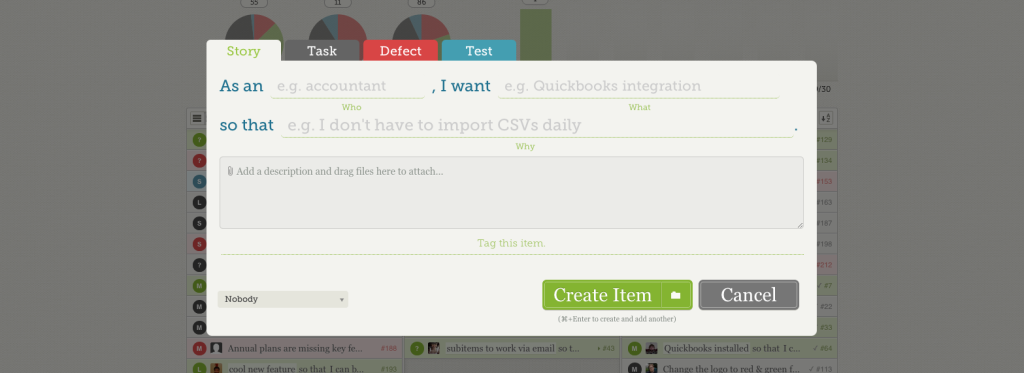The User Story is the main item of work in most agile software teams. Often, Product Managers are the people responsible for writing them. The idea is that you represent a feature from a user’s perspective to the rest of the organization (specifically, the developers who will be working on it).
Generally, it follows this format:
As a [person], I want [a feature], so that [I can do this…]
How to write better specs
Writing good specs is important. A developer can’t start on a feature if they don’t understand what the feature is supposed to do.
“Most of the times it turns out that spec writers haven’t really thought everything through, and it’s usually only when we start designing and developing that we end up in trouble, as a lot of the spec seems to have holes.” – eagerMoose on Stack Exchange
Too often, stakeholders haven’t really thought through a feature themselves. A developer needs to understand why the user needs the feature, what the feature does, and how it will be used.
At Sprintly we use a Mad Libs-style form for creating user stories:

Using this form helps set a specific direction for a specific feature. It also ensures that the scope of a given story is kept small.
Specifically, you want to help the developer understand how the feature is supposed to work. My favorite way to do this, create interactive mockups before actual development begins:
“We would be faster if we prototyped more thoroughly. Sometimes we don’t think hard enough about the user flow or interactions, so we end up having to re-think it after implementation, and then redevelop it.” – Tobin Harris, Director at Pocketworks
Here are a few good tools for prototyping:
– HTML + JavaScxript: One way to prototype, is to build clickable HTML mockups yourself.
– Balsamiq: Balsamiq is a great low-fidelity mockup tool.
– InvisionApp: Invision is a very collaborative mockup and prototyping tool.
Charlie Deets talks more about prototyping in this article.
The next lesson
That’s it for today! The next lesson delves into the topic of identifying product opportunities in the market. You can subscribe to all five (free) lessons here.

